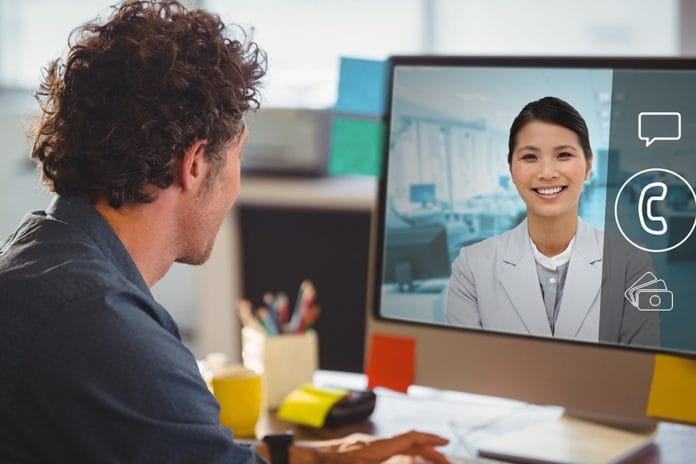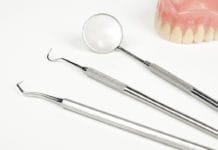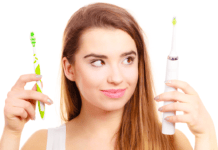In 2018, my husband and I were interviewing college coaches for our son (and, no, not the Lori Loughlin kind of “coach”). A friend at a university recommended a company that could help us navigate the minefield of discussions.
My dear, sweet son had become a different soul in his teenage years. As I looked onto the horizon, I saw two rams locking horns as they fought for territory.
The company that we ended up choosing would sometimes send personal videos as emails. It blew me away. The videos were specific for us, referenced our needs, and used our names and information that we had discussed in a prior phone call. This set them far apart from the rest.
Why had this never happened in any correspondence I had ever received to date? I have had a lot of sales emails. Not the Bed Bath and Beyond kind, but the “take our course” or “we’ll teach you how to be a speaker” kind. This idea was genius to me and had its place in the right arena.
Getting Kind of Loud Underneath this PPE
In May of this year, an article I wrote for Today’s RDH was titled, “The Boomers: Enhancing the Dental Hygienist’s Communication Skills for the Elders.” When I originally wrote it, I had no idea what was to unfold in the coming weeks. Part of the article addressed hearing impairments and using facial expressions to help with communication.
Really? How can anyone hear us with a shield, surgical mask, and an N95 respirator, let alone see a facial expression? The eyes and the mouth are the most informative regions of the face because they are the most expressive. Concealing the mouth can be problematic when we want to come across as approachable and friendly. We are wearing masks and gear far more than the average hospital or doctor office workers who themselves are so conscious of this that they are adhering happy faces or pictures of themselves to their gowns. That isn’t so easy for us in dentistry the fast-paced gown donning and doffing business. Another pitfall is the louder we speak, the more we sound angry. Our heads start pounding a little bit harder.
What could be a solution to a problem that doesn’t look like it’s going away anytime soon? I began to talk to some of my gang of hygiene friends who are supportive, yet not those “yes” friends. We played around with the idea of making videos for a more personal touch to hygiene visits similar to my college coach.
Before you say that is the last thing to add to your plate, some videos could be done prior and put into a library of sorts. Oral hygiene instruction videos with you on a typodont, or in your coworker’s mouth, teaching how to clean using interproximal brushes could be incredibly helpful to some. There could be videos about the benefits of using electric toothbrushes or other home-care oral aids − instructions for not only what mouth rinse to use but how to use it. Oral systemic tips and tricks based upon that person’s specific health.
A Personal Video Message
The personal videos could be “Hi Sarah, we are so happy to see you back at the office. Today’s visit went so well, and we know that things are quite a bit different with all the PPE we are wearing. So, we decided to send you a personal message.” It can focus on their home care, their periodontal health, practically anything. Maybe dig into oral-systemic tips and tricks based upon their specific health that there is never enough time for.
As with those comfort calls that you make after a surgery at the end of the day, how about a personal video check-in?
Videos could be considered part of medical records so HIPAA compliance needs to be thought through. Although not required as continuing education in most states, taking a refresher on HIPAA laws is always a good thing. One option is to use an email or text messaging system that encrypts messages for protected health information (PHI) or require a patient portal that has password protection.
Consent and preference forms need to be signed as your regular paperwork that the practice will honor. On your consent form, you can add, “I (the patient) understand that email and standard SMS messaging are not confidential methods of communication and may be insecure. I further understand that, because of this, there is a risk that email and standard SMS messaging regarding my medical care might be intercepted and read by a third party.” This verbiage will help if you use unencrypted emails and texts to clarify exactly to the patient what they are consenting too. Remember this consent only applies to provider and patient. All provider-to-provider communication must still be secure and HIPAA compliant.
Also, something else to remember is that you can only use your personal phone to record your video but not to send directly to the patient. There is an app I found called Spruce, that might make everything simpler. It is an all-in-one communication platform for doctors and patients that is fully HIPAA compliant. You can send texts, videos, and even PDF attachments. A basic plan that includes secure messaging is $24 a month per user with a 14-day free trial.
Companies That Help with Videos
Several companies offer a service of helping to create and send videos − Gratavid, GoVideo by Vidyard, Fluvid, and Soapbox.
Gratavid is a software platform for creating and sending personalized videos in minutes that was originally designed for a “thank you” to donors. Some of their clients include The United Way and Teach for America. This made me think about another opportunity for us in dentistry to use videos to thank our patients for trusting us with their health.
If we prerecorded instructional videos showing how to do interproximal cleaning, for example, perhaps we could keep them in a library of sorts within Gratavid’s system that would store them, letting us have easy access to send to patients later. The software allows you to record the video on your smartphone that then is sent through their software to be texted or emailed.
You could automatically send birthday videos, and Gratavid creates analytics to see if the receiver is engaging. Their system integrates with other systems you may use such as Mailchimp, an automated platform, and email marketing service. Plans begin at $100 a month.
When I spoke with Will Trapp, the founder of Gratavid, he shared very interesting data about the impact of videos. Studies show that viewers retain 95% of a message when they watch it in a video compared to 10% when reading it in text.1 This makes me think how wonderful for patient education and post-operative instructions.
The service that our college coach used is called BombBomb. This company integrates with over 50 systems including Gmail, Outlook, and Salesforce, and pricing begins at $468 annually. As I researched the company, I found that one of their clients was an orthodontist in Arizona, and he said he was “looking for a way to humanize and personalize the technology” in his office. To one of his patients, he attached a video about how to brush with braces and another a simple welcome to the practice.
The video idea is out-of-the-box thinking, but the times we are in present the necessity for a new approach to how we have done things in the past. Your office could be the unicorn practice (insert a rainbow too) that incorporates better patient care with a more personal approach.
Now Listen to the Today’s RDH Dental Hygiene Podcast Below:
Reference
- 50 Must-know Stats about Video Marketing 2016. Insivia – A Strategic Growth Consultancy and Marketing Firm. January 12, 2016. Retrieved from https://www.insivia.com/50-must-know-stats-about-video-marketing-2016/












